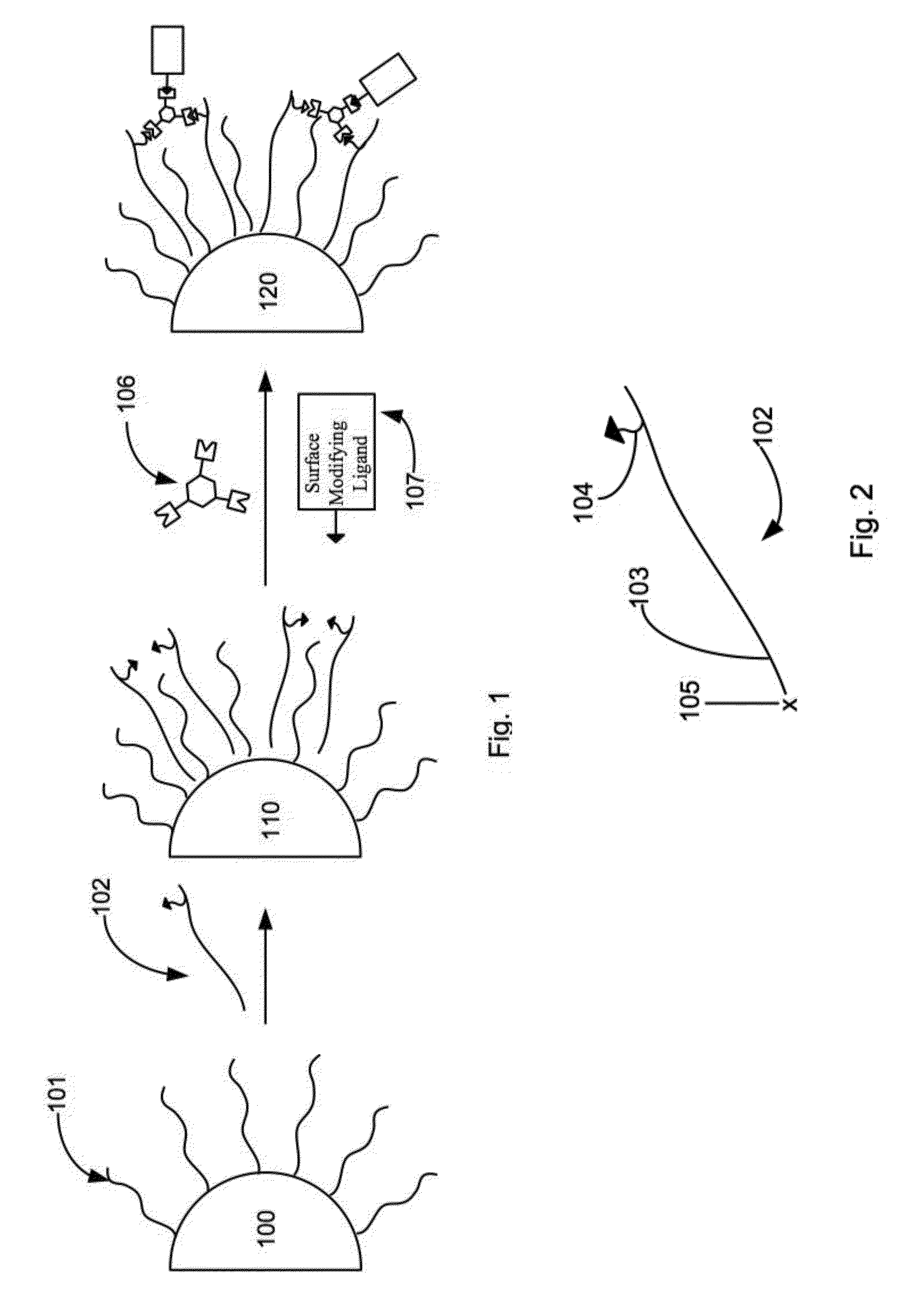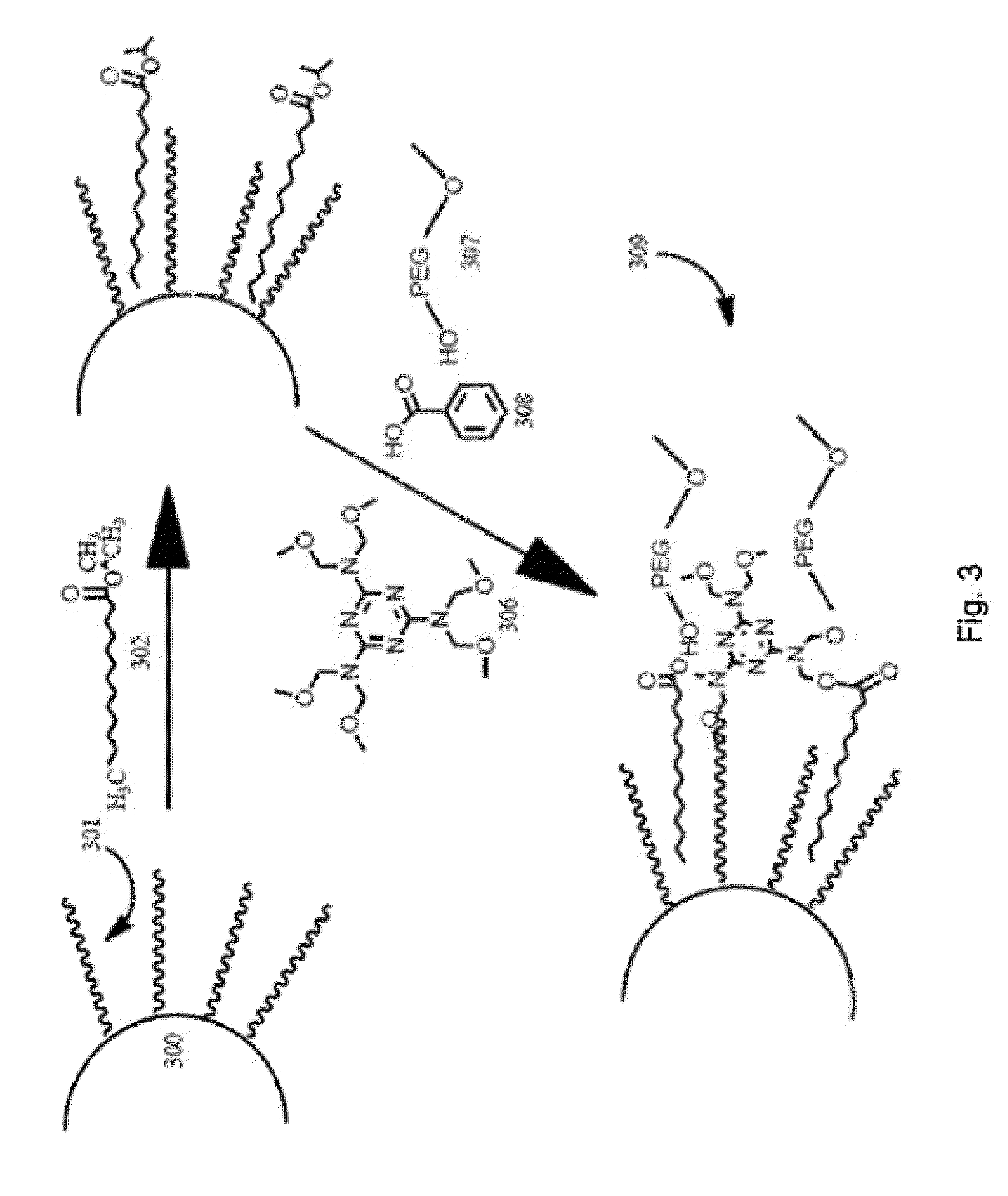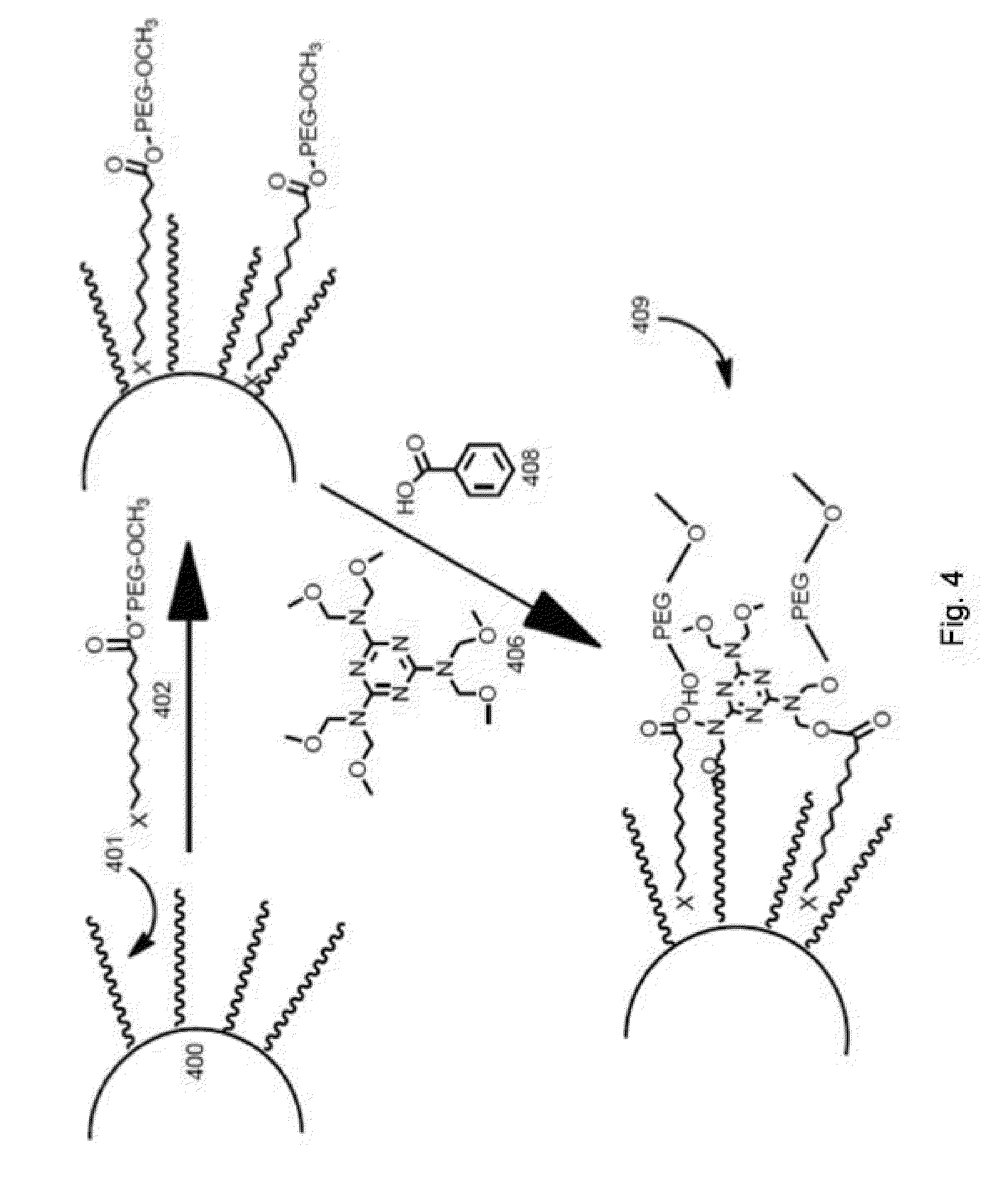Surface modified nanoparticles
a surface-modified nanoparticle and nanoparticle technology, applied in the field of surface-modified nanoparticles, can solve the problems of reducing the optical performance of the nanoparticle, reducing the quantum yield (qy), and the band gap typically gradually increasing, so as to increase the effect of increasing the compatibility of the surface-modified nanoparticl
- Summary
- Abstract
- Description
- Claims
- Application Information
AI Technical Summary
Benefits of technology
Problems solved by technology
Method used
Image
Examples
examples
1. Silicone-Compatible Nanoparticles
[0054]Cadmium free quantum dot nanoparticles (CFQD) (InP / ZnS) (200 mg) with red emission at 608 nm was dispersed in toluene (1 mL) with isopropyl myristate (100 microliters). The mixture was heated at 50° C. for about 1-2 minutes then slowly shaken for 15 hours at room temperature. A toluene solution (4 mL) of HMMM (Cymel 303) (400 mg), monohydroxy polydimethyl siloxane (MW 5 kD) (200 mg), and p-toluene sulfonic acid (70 mg) was added to the nanoparticle dispersion. The mixture was degased and refluxed at 140° C. for 4 hours while stirring at 300 rpm with a magnetic stirrer. During the first hour a stream of nitrogen was passed through the flask to ensure the removal of volatile byproducts generated by the reaction of HMMM with nucleophiles. The mixture was allowed to cool to room temperature and stored under inert gas. The surface-modified nanoparticles showed little or no loss in fluorescence quantum yield and no change in the emission peak or f...
PUM
| Property | Measurement | Unit |
|---|---|---|
| diameter | aaaaa | aaaaa |
| diameter | aaaaa | aaaaa |
| diameter | aaaaa | aaaaa |
Abstract
Description
Claims
Application Information
 Login to View More
Login to View More - R&D
- Intellectual Property
- Life Sciences
- Materials
- Tech Scout
- Unparalleled Data Quality
- Higher Quality Content
- 60% Fewer Hallucinations
Browse by: Latest US Patents, China's latest patents, Technical Efficacy Thesaurus, Application Domain, Technology Topic, Popular Technical Reports.
© 2025 PatSnap. All rights reserved.Legal|Privacy policy|Modern Slavery Act Transparency Statement|Sitemap|About US| Contact US: help@patsnap.com



